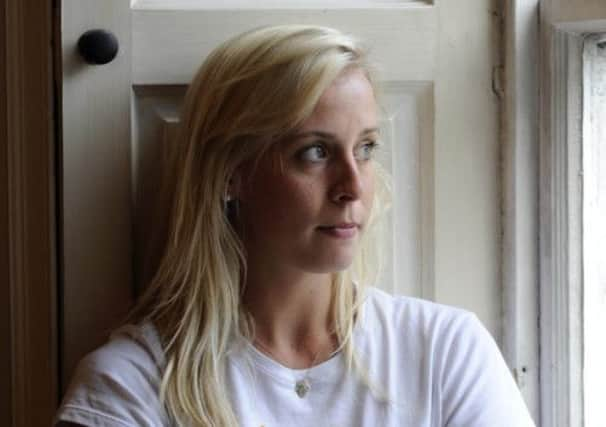Lynsey Sharp: Light at the end of tunnel


That is the position I’ve been in over the past month. The operation to remove the plantaris tendon from my left leg had been a complete success, and rehab was going well. My stitches were out, I was building up my strength, and the start of winter training was just a few weeks away.
Then, one morning, I noticed that something was not quite right. A long, narrow strip of skin had been lifted out of the way for the operation, remaining attached only on one short side. The other three sides were reattached by stitches, and all had seemed well – but now there was a black line running down just under the skin.
Advertisement
Hide AdAdvertisement
Hide AdThat was a worry in itself, and I became more worried when, after a consultation, I was told that some of the tissue was dead. Another operation would be needed to remove it.
Frustration is actually a very mild way to describe your emotions at times like that. Fear, despair, rage: those are probably more accurate terms.
No matter what the doctors are telling you, no matter how calm and reassuring their demeanour, you inevitably think that you are back to square one. In my case, it had been five months before the plantaris problem was identified and sorted out. I’d missed almost the entire 2013 season, and now, suddenly, after being close to having a date pencilled in for returning to proper training on the track, I had to face up to another period of complete rest.
For several weeks, the nature of the initial operation had restricted the kind of training I could do. To protect the stitches, I was told not to go swimming, and I couldn’t do a full cardiovascular workout because sweat might be a threat to the wound. I wasn’t even allowed to have a shower.
The second operation meant those restrictions were back in force, and my return to the track would be delayed. The doctor said that this time the recovery would take four to six weeks before I could contemplate any form of weight-bearing exercise. I know how many blocks of training are required for any athlete to get into the best shape for international competition and, inevitably, I was leafing through the calendar in my head, working out how my schedule would fit in with the countdown to the Commonwealth Games.
The first plan was to take a skin graft from my hip to replace the dead tissue on my lower leg, but the doctor then decided that a more complicated procedure would produce a better result. Rather than removing some skin entirely from one place and transplanting it, he would stretch some down to cover the area where the dead tissue was to be removed. Skin is remarkably elastic, apparently, and the younger you are, the more elastic it is.
Thankfully, I was given a general anaesthetic and did not have to witness the operation. More thankfully still, it went well. The dead skin was removed, the wound was washed and cleaned, and the healthy skin was pulled down to cover the gap. It was one of the more unusual stretching exercises I’ve undertaken as an athlete.
Since then, everything has gone well. I got my plaster cast off ahead of schedule, then my air cast and crutches were also dispensed with more quickly than expected. On Monday I go back to see the doctor: that will be less than three weeks since the operation, and all the signs are that I’ll be told I can resume training. Some normality has already returned to my life – the other day I even had my first shower in six weeks.
Advertisement
Hide AdAdvertisement
Hide AdIn winter I used to train in a disused railway tunnel in Edinburgh, so I’m familiar with the feeling of emerging from a long tunnel into the bright light, and that’s exactly how it feels now. The end is in sight. The light is there.
My first eight-week block of training will be about regaining the strength – muscular and cardiovascular – to resume proper 800 metres training. That means I’ll be starting my normal winter training later than usual but, with eight months still to go before Glasgow, there is still ample time to get back into peak condition. I’ll need to record a qualifying time if I want to make the team, of course, and that will be the focus during the early months of next year.
My coaching situation has also been sorted out. Terrence Mahon, who was my coach last year but is now based in Boston, has devised a programme for me, and will continue to oversee my development. Practical sessions in Loughborough will be with Rana Reider and Nick Dakin.
One thing I have reminded myself of a lot is that the original operation did what it was meant to do. The plantaris was removed, and the niggling pain that prevented me from training properly earlier this year will not return. I will come back from this in better physical shape, and I’ll be tougher mentally too.